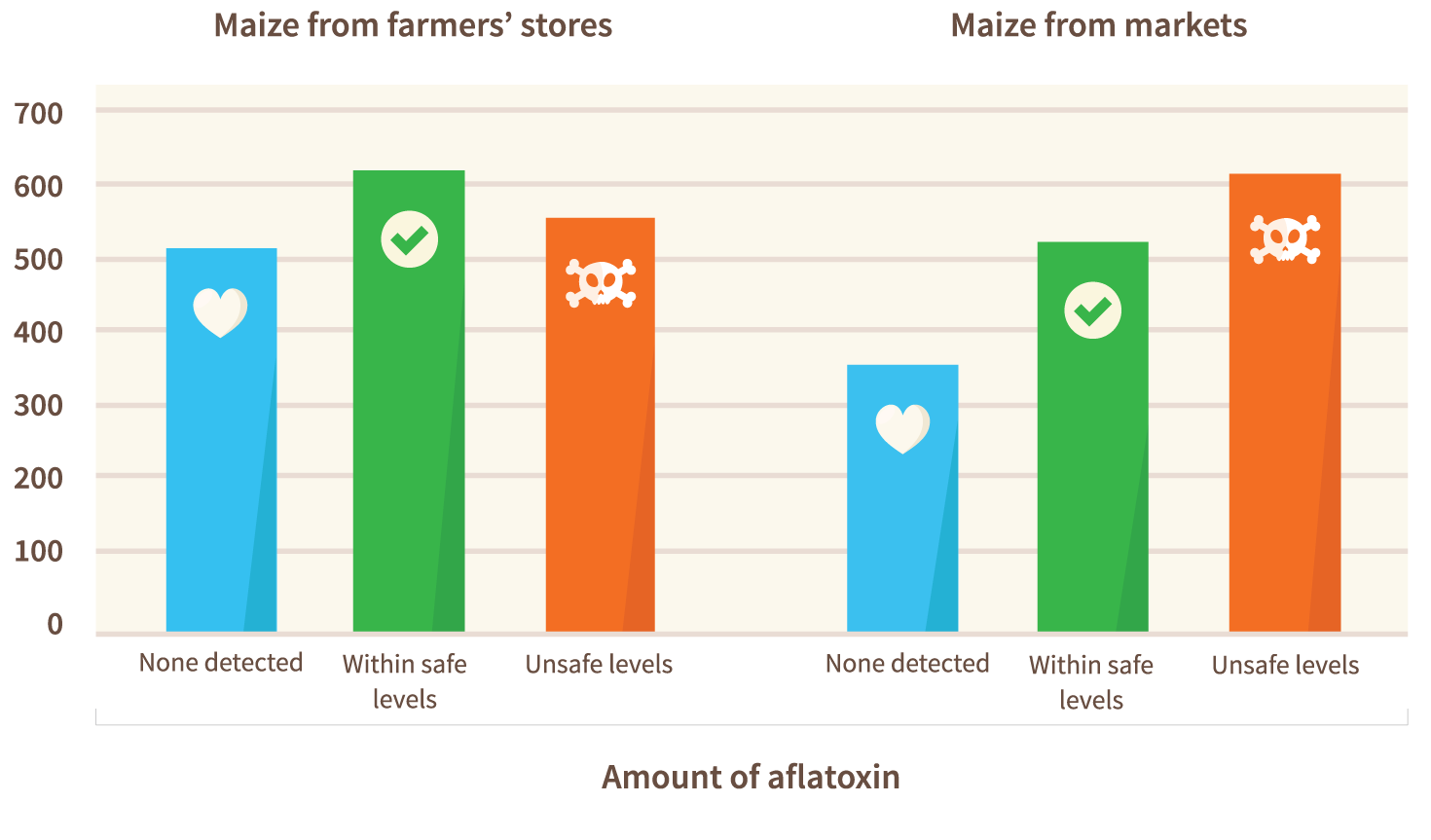 Contamination is common in foods being sold and eaten throughout Africa. Many of the worst-hit foods are the staples that we eat every day. Even small children are exposed to aflatoxin from a very young age, across the continent from The Gambia to Uganda.
Contamination is common in foods being sold and eaten throughout Africa. Many of the worst-hit foods are the staples that we eat every day. Even small children are exposed to aflatoxin from a very young age, across the continent from The Gambia to Uganda.
Danger in your basket
 In Kenya, for every ten times you go to the market for maize, four of those times you are likely to buy something that is bad for you. Scientists bought hundreds of maize samples from markets across the country, and found that 41% contained aflatoxin levels above the limit allowed in food. Less than a quarter of the maize had no aflatoxin at all, and 12% had more than ten times the safe limit.
In Kenya, for every ten times you go to the market for maize, four of those times you are likely to buy something that is bad for you. Scientists bought hundreds of maize samples from markets across the country, and found that 41% contained aflatoxin levels above the limit allowed in food. Less than a quarter of the maize had no aflatoxin at all, and 12% had more than ten times the safe limit.
At the same time, a third of all maize being kept by farmers in their stores was found over the safe limit for aflatoxin content. One of the worst things about aflatoxin is that the fungus keeps growing inside food after it is harvested, often invisibly. That means that the amount of toxin tends to go up and up throughout every step of storage and transport until the food reaches your plate.

 Levels of aflatoxin in milk are also a big concern. In Nairobi, out of hundreds of packets of milk collected from local households and shops, every single one contained aflatoxin, and 63% – almost two thirds – had levels of toxin over the safe limits recommended by the European Union.
Levels of aflatoxin in milk are also a big concern. In Nairobi, out of hundreds of packets of milk collected from local households and shops, every single one contained aflatoxin, and 63% – almost two thirds – had levels of toxin over the safe limits recommended by the European Union.
Fertile ground for toxic tragedy
So why does aflatoxin hit Africa so hard? A major factor is climate: unhappily, many parts of sub-Saharan Africa have ideal conditions to encourage the fungus that produces aflatoxin. In Nigeria, for example, aflatoxin contaminates up to 65% of maize and groundnuts in some years.
 The first danger period is while food is still growing. Just like people, if plants are stressed and unhealthy, they struggle to fight infection. Hot, dry weather helps the aflatoxin fungus to get a foothold, and with droughts becoming ever more frequent and severe this threat is only likely to increase.
The first danger period is while food is still growing. Just like people, if plants are stressed and unhealthy, they struggle to fight infection. Hot, dry weather helps the aflatoxin fungus to get a foothold, and with droughts becoming ever more frequent and severe this threat is only likely to increase.
Damp and humid conditions are menaces too. During the second danger period, once a food has finished growing and is already infected, what really helps the fungus to grow is a combination of heat and humidity. This is a big problem for food being kept in storage.
Certain areas of Africa also have the ill fortune to host high proportions of extremely potent toxin-producing strains of the fungus that makes aflatoxin, rather than harmless non-toxic strains. All this means that the most dangerous aflatoxin hotspots in the world are found on African soil.
Levels of aflatoxin on our continent are high, and it is also more easily able to reach our plates since African countries lack the strict testing and controls found in places like Europe and North America, and many of our food systems and markets are informal. Governments and organisations are working hard to improve this situation, but systems to deal with aflatoxin are still in their infancy.










